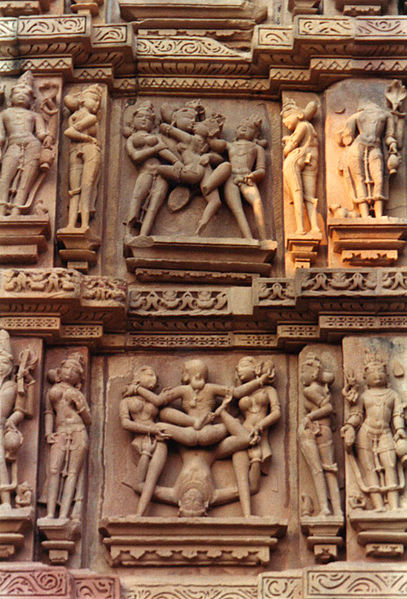
Mithuna
Kandariya Mahadeva temple, Khajuraho
The formalized composition of the sexual depiction on the lower panel has led some writers to conjecture that a tantric diagram is represented. However, this interpretation is not so obviously applicable to the panel immediately above it. Carvings on the Khajuraho temples portray a wide variety of sexual acts (mithuna), in different styles and moods - refinement and vulgarity, tenderness and lust, calculation and spontaneity, can all be found here, in a seemingly endless number of configurations and positions. Indeed, this variety itself is a primary fact about the sculptures. Another datum is the positioning of the carvings, which tends to be at ritually "dangerous" or "weak" points of the structure, such as the junction of mandapa and garbhagriha.
Some writers believe the carvings depict actual (tantric) rites which were supposedly conducted in the temples themselves, although there is no actual evidence for this. Other writers treat the carvings as celebrating the "Marriage of Shiva and Parvati," a rite which is, however, only known in the temples from modern times. A more likely explanation is that these sculptures symbolize fertility, abundance, and good fortune, and perform an apotropaic (turning away evil), magical-protective function for the temples they decorate.
Another element to mention is humor, for example in the notorious mithuna of a man with a horse on the wall of Lakshmana Temple, as a spectator peeks through his upraised hands in horror! Fun and religion are not always incompatible; consider these mithuna, and also the temple prostitutes of the ancient world, and even the non-sexual, but still transgressive, gargoyles of medieval European cathedrals.


